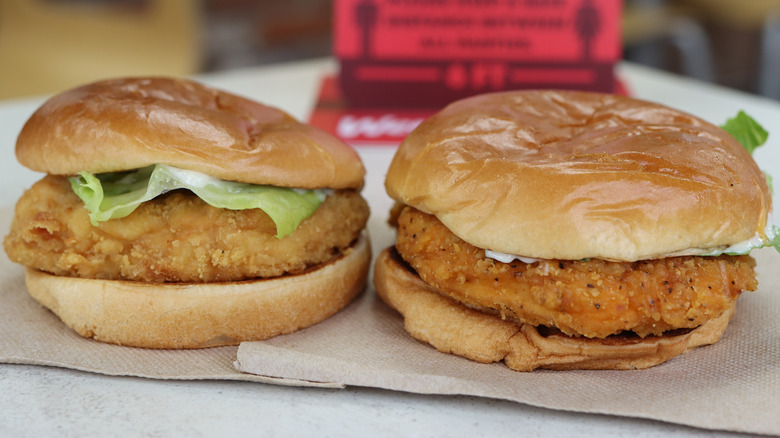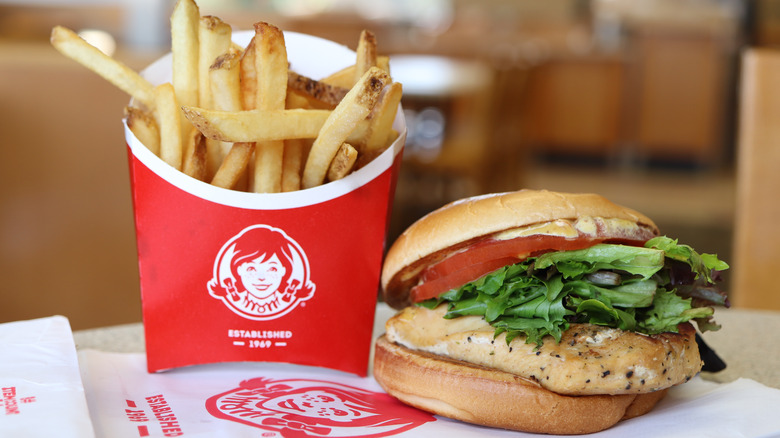The Wendy's Chicken Sandwich Change You Probably Never Realized Happened
If you've noticed chicken wings at your local bar getting more expensive, that's because there's been a national shortage of the clucking birds due to weather issues, increased demand during the pandemic, and a shortage of labor. But before all of that, there was a different kind of chicken shortage. National fast-food chains were scrambling to source smaller poultry. Why? Because smaller birds produce sandwiches that are more tender and juicy than those made from older, larger animals.
That's important to a growing number of people in the United States, who are eating more chicken than ever before. In 1960, each American ate 28 pounds of chicken each year, according to U.S. Department of Agriculture data on the National Chicken Council's website. This year, they'll eat an estimated 97.2 pounds, making chicken by far the nation's favorite choice for animal protein.
The increasing appetite for chickens has meant big bucks for fast food chains that can keep people happy with their menus. That means no rubbery chicken. Well, at least on the plate; after all, actual rubber chickens can be kind of fun.
That brings us to the move Wendy's made in 2017 to change up its chicken supply — a move you probably didn't even notice.
Wendy's learns a lesson from Canada
While you may not have heard the news, the chain Dave Thomas started in the late 1960s said it would spend $30 million to switch to 20% smaller birds in a bid to "significantly and immediately improve the tenderness and juiciness of chicken for Wendy's U.S.-based customers." It's understandable that this may have slipped under your culinary radar, because the size of Wendy's sandwiches didn't change.
After hearing complaints about rubbery chicken fillets, "We started working in partnership with [suppliers] to understand what was going on with our chicken overall," Wendy's head of communications Liliana Esposito (now the company's chief corporate affairs and sustainability officer) told Business Insider. "By specifying a smaller overall bird size on average we were able to get a better quality fillet."
While the change was new for the United States, Wendy's said its restaurants in Canada have used smaller birds for a long time and "have enjoyed consistently high levels of customer satisfaction."
Nobody likes a Chicken Little telling you the sky is falling, but it turns out more people than ever like little chickens.

